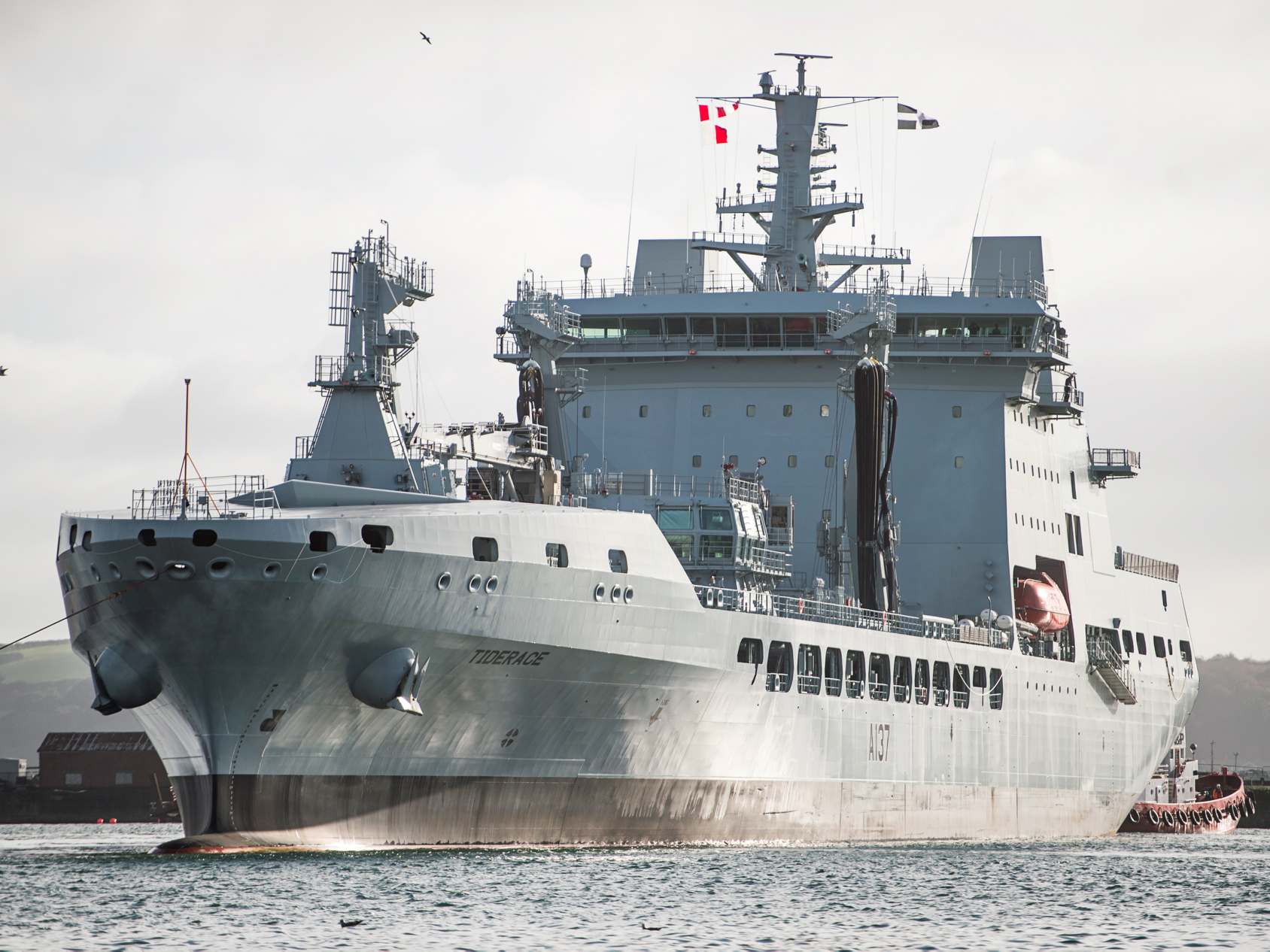2017 has been a blockbuster year for the Royal Navy. HMS Queen Elizabeth, a monster new aircraft carrier, set sail for the first time in the summer.
Its sister craft, HMS Prince of Wales, is following her down the pipeline, and was officially named a few weeks ago.
Although less glamorous than the colossal Elizabeth-class carriers – the largest ships the Royal Navy has ever fielded – a new generation of support ships is also needed to give them vital backup at sea.
RFA Tiderace is the latest of these, and arrived in UK waters this week for the first time.
The ship was constructed in South Korea by commercial builders, but is being brought to a Naval dockyard in Falmouth where it will be fitted with weapons, armour, and other modifications to make it ready to accompany Britain's most powerful warships in the field.
This is RFA Tiderace, the newest addition to Britain's military capability at sea.

The Tiderace is part of the Royal Fleet Auxiliary (RFA) - the civilian support service for the Royal Navy.
The RFA is formally separate from the Navy, and is overseen by Britain's Ministry of Defence.
Unlike the Navy, RFA vessels are not solely staffed by enlisted servicemen and women. The ships are styled RFA, rather than the HMS (Her Majesty's Ship) acronym familiar from commissioned ships in the Royal Navy.
It will carry supplies, including fuel, food, and water for HMS Queen Elizabeth.
The Tiderace is one of four ships — Tide spring, Tiderace, Tidesurge, and Tideforce — being brought in as support for the Navy.

The ships are fundamentally tankers, but have modifications to distinguish them from regular commercial vessels.
Each one weighs in at 39,000 tonnes, is 201 metres long and has a crew of 109 people. They can carry 19 million litres of fuel and 1.3 million litres of water.
It will play sidekick to this ship — HMS Queen Elizabeth — and its sister craft HMS Prince of Wales.

The Queen Elizabeth's power comes from twin Rolls-Royce MT-30 turbine engines.
It has a natural range of 10,000 nautical miles, but can be extended even further with assistance from the RFA.
Tiderace is sea-worthy now — but is having modifications to make sure it is up to the task of military operations.

Engineers in Falmouth, Cornwall, will add armour plating to the vessel, as well as what a military press release described as "self-defence weaponry."
A spokesman for the Ministry of Defence declined to elaborate on what weaponry the ship would be fitted with.
It will also be given state-of-the-art communications hardware.
Here are the statistics of the Tide-class ships.

1,000 cubic metres is equivalent to one million litres.
As it shows, RFA ships can do much more than play second fiddle to more powerful warships.

The ship - which can carry a Chinook transport helicopter on deck - is built for solo missions as well.
The MoD listed security patrols and humanitarian relief as potential applications of the ship.
Earlier this month, it was an RFA vessel - the Mounts Bay - which was deployed to the British Virgin Islands to respond to the devastation caused by Hurricane Irma.
RFA Mounts Bay delivers 6 tonnes of emergency aid to Anguilla & will shortly arrive in the British Virgin Islands https://t.co/LdTqUas9qT pic.twitter.com/UmwE81m7Q8
— Royal Navy (@RoyalNavy) September 8, 2017

